Characteristics of Atmospheric Boundary Layer Structure during PM2.5 and Ozone Pollution Events in Wuhan, China
Abstract
:1. Introduction
2. Methodology
2.1. Data and Sampling Sites
2.2. Back-Trajectory Analysis
2.3. Potential Source Contribution Function (PSCF)
2.4. Concentration Weighted Trajectory (CWT)
3. Results and Discussion
3.1. Overview of Air Pollution in Wuhan
3.2. Analysis of PM2.5 and O3 Pollution during Winter and Summer
3.3. Analysis of PM2.5 Pollution Process
3.4. Analysis of O3 Pollution Event
4. Conclusions
Supplementary Materials
Author Contributions
Funding
Acknowledgments
Conflicts of Interest
References
- World Health Organization (WHO). Ambient Air Pollution: A Global Assessment of Exposure and Burden of Diseases. 2016. Available online: http://apps.who.int/iris/bitstream/handle/10665/250141/?sequence=1 (accessed on 12 May 2018).
- Ran, L.; Zhao, C.; Geng, F.; Tie, X.; Tang, X.; Peng, L.; Zhou, G.; Yu, Q.; Xu, J.; Guenther, A. Ozone photochemical production in urban Shanghai, China: Analysis based on ground level observations. J. Geophys. Res. 2009, 114, 1–14. [Google Scholar] [CrossRef]
- Li, G.; Bei, N.; Cao, J.; Wu, J.; Long, X.; Feng, T.; Dai, W.; Liu, S.; Zhang, Q. Widespread and persistent ozone pollution in eastern China during the non-winter season of 2015: Observations and source attributions. Atmos. Chem. Phys. 2017, 17, 2759–2774. [Google Scholar] [CrossRef]
- Feng, Z.; Hu, E.; Wang, X.; Jiang, L.; Liu, X. Ground-level O3 pollution and its impacts on food crops in China: A review. Environ. Pollut. 2015, 199, 42–48. [Google Scholar] [CrossRef] [PubMed] [Green Version]
- Liu, T.; Tian, T.; Hui, Y.; Jun, Y.; Qian, X.; Yan, H.; Rong, Z.; Jun, W. The short-term effect of ambient ozone on mortality is modified by temperature in Guangzhou, China. Atmos. Environ. 2013, 76, 59–67. [Google Scholar] [CrossRef]
- People’s Republic of China National Ambient Air Quality Standard, China. 2012. Available online: http://210.72.1.216:8080/gzaqi/Document/gjzlbz.pdf (accessed on 8 March 2018). (In Chinese).
- World Health Organization (WHO). WHO Air quality Guidelines for Particulate Matter, Ozone, Nitrogen Dioxide and Sulfur Dioxide. Available online: http://apps.who.int/iris/bitstream/handle/10665/69477/WHO_SDE_PHE_OEH_06.02_eng.pdf?sequence=1 (accessed on 12 May 2018).
- Zhang, B.; Zhao, J.; Yang, R.; Qian, Z.; Liang, S.; Bassig, B.A.; Zhang, Y.; Hu, K.; Xu, S.; Dong, G.; et al. Ozone and Other Air Pollutants and the Risk of Congenital Heart Defects. Sci. Rep. 2016, 6, 34852. [Google Scholar] [CrossRef] [PubMed] [Green Version]
- Lyu, X.P.; Wang, Z.W.; Cheng, H.R.; Zhang, F.; Zhang, G.; Wang, X.M.; Ling, Z.H.; Wang, N. Chemical characteristics of submicron particulates (PM1.0) in Wuhan, Central China. Atmos. Res. 2015, 161, 169–178. [Google Scholar] [CrossRef]
- Song, J.; Guang, W.; Li, L.; Xiang, R. Assessment of air quality status in Wuhan, China. Atmosphere 2016, 7, 56. [Google Scholar] [CrossRef]
- Lyu, X.P.; Chen, N.; Guo, H.; Zeng, L.; Zhang, W.; Shen, F.; Quan, J.; Wang, N. Chemical characteristics and causes of airborne particulate pollution in warm seasons in Wuhan, central China. Atmos. Chem. Phys. 2016, 16, 10671–10687. [Google Scholar] [CrossRef]
- Qian, Z.; Liang, S.; Yang, S.; Trevathan, E.; Huang, Z.; Yang, R.; Wang, J.; Hu, K.; Zhang, Y.; Vaughn, M.; et al. Ambient air pollution and preterm birth: A prospective birth cohort study in Wuhan, China. Int. J. Hyg. Environ. Health 2016, 219, 195–203. [Google Scholar] [CrossRef] [PubMed]
- Lyu, X.P.; Chen, N.; Guo, H.; Zhang, W.H.; Wang, N.; Wang, Y.; Liu, M. Ambient volatile organic compounds and their effect on ozone production in Wuhan, central China. Sci. Total Environ. 2016, 541, 200–209. [Google Scholar] [CrossRef] [PubMed]
- Mbululo, Y.; Qin, J.; Yuan, Z.X. Evolution of atmospheric boundary layer structure and its relationship with air quality in Wuhan, China. Arab. J. Geosci. 2017, 10, 1–12. [Google Scholar] [CrossRef]
- Acciai, C.; Zhang, Z.; Wang, F.; Zhong, Z.; Lonati, G. Characteristics and Source Analysis of Trace Elements in PM2.5 in the Urban Atmosphere of Wuhan in Spring. Aerosol Air Qual. Res. 2017, 17, 2224–2234. [Google Scholar] [CrossRef]
- Gong, X.; Hong, S.; Jaffe, D.A. Ozone in China: Spatial Distribution and Leading Meteorological Factors Controlling O3 in 16 Chinese Cities. Aerosol Air Qual. Res. 2018, 18, 2287–2300. [Google Scholar] [CrossRef] [Green Version]
- Xu, G.; Jiao, L.; Zhang, B.; Zhao, S.; Yuan, M.; Gu, Y.; Liu, J. Spatial and Temporal Variability of the PM2.5/PM10 Ratio in Wuhan, Central China. Aerosol Air Qual. Res. 2017, 17, 741–751. [Google Scholar] [CrossRef] [Green Version]
- Wang, S.; Yu, S.; Yan, R.; Zhang, Q.; Li, P.; Wang, L.; Liu, W.; Zheng, X. Characteristics and origins of air pollutants in Wuhan, China, based on observations and hybrid receptor models. J. Air Waste Manag. Assoc. 2017, 67, 739–753. [Google Scholar] [CrossRef] [PubMed]
- Lu, X.; Chen, N.; Wang, Y.; Cao, W.; Zhu, B.; Yao, T.; Fung, J.C.H.; Lau, A.K.H. Radical Budget and Ozone Chemistry during Autumn in the Atmosphere of an Urban Site in Central China. J. Geophys. Res. 2017, 122, 3672–3685. [Google Scholar] [CrossRef]
- Tong, L.; Zhang, J.; Xiao, H.; Cai, Q.; Huang, Z. Identification of the potential regions contributing to ozone at a coastal site of eastern China with air mass typology. Atmos. Pollut. Res. 2017, 8, 1044–1057. [Google Scholar] [CrossRef]
- Zhang, L.; Jaffe, D.A. Trends and sources of ozone and sub-micron aerosols at the Mt. Bachelor Observatory (MBO) during 2004–2015. Atmos. Environ. 2017, 165, 143–154. [Google Scholar] [CrossRef]
- Gioda, A.; Oliveira, R.C.G.; Cunha, C.L.; Corrêa, S.M. Understanding ozone formation at two islands of Rio de Janeiro, Brazil. Atmos. Pollut. Res. 2018, 9, 278–288. [Google Scholar] [CrossRef]
- Jenkin, M.E.; Clemitshaw, K.C. Ozone and other secondary photochemical pollutants: Chemical processes governing their formation in the planetary boundary layer. Atmos. Environ. 2000, 34, 2499–2527. [Google Scholar] [CrossRef]
- Wang, T.; Cheung, V.T.F.; Anson, M.; Li, Y.S. Ozone and related gaseous pollutants in the boundary layer of eastern China: Overview of the recent measurement at a rural site. Geophys. Res. Lett. 2001, 28, 2373–2376. [Google Scholar] [CrossRef]
- Wan, W.; Xie, X.; Zhang, S. Health Effect Valuation of Ground-level Ozone Control in Beijing and its surrounding areas, China. Adv. Mater. Res. 2012, 360, 585–589. [Google Scholar] [CrossRef]
- Tao, Y.; Huang, W.; Huang, X.; Zhong, L.; Lu, S.; Li, Y.; Dai, L.; Zhang, Y. Estimated Acute Effects of Ambient Ozone and Nitrogen Dioxide on Mortality in the Pearl River Delta of Southern China. Environ. Health Perspect. 2012, 120, 393–398. [Google Scholar] [CrossRef] [PubMed] [Green Version]
- Wang, T.; Xue, L.; Brimblecombe, P.; Fat, Y.; Li, L.; Zhang, L. Ozone pollution in China: A review of concentrations, meteorological influences, chemical precursors, and effects. Sci. Total Environ. 2017, 575, 1582–1596. [Google Scholar] [CrossRef] [PubMed]
- Liu, F.; Wang, X.; Zhu, Y. Assessing current and future ozone-induced yield reductions for rice and winter wheat in Chongqing and the Yangtze River Delta of China. Environ. Pollut. 2009, 157, 707–709. [Google Scholar] [CrossRef] [PubMed] [Green Version]
- Feng, Z.; Sun, J.; Wan, W.; Hu, E.; Calatayud, V. Evidence of widespread ozone-induced visible injury on plants in Beijng China. Environ. Pollut. 2014, 193, 296–301. [Google Scholar] [CrossRef] [PubMed]
- Shan, W.; Yin, Y.; Lu, H.; Liang, S. A meteorological analysis of ozone episodes using HYSPLIT model and surface data. Atmos. Res. 2009, 4, 767–776. [Google Scholar] [CrossRef]
- Tang, G.; Zhu, X.; Xin, J.; Hu, B.; Song, T.; Sun, Y.; Zhang, J.; Wang, L.; Cheng, M.; Chao, N.; et al. Modelling study of boundary-layer ozone over northern China—Part I: Ozone budget in summer. Atmos. Res. 2017, 187, 128–137. [Google Scholar] [CrossRef]
- Hu, X.M.; Ma, Z.; Lin, W.; Zhang, H.; Hu, J.; Wang, Y.; Xu, X.; Fuentes, J.D.; Xue, M. Impact of the Loess Plateau on the atmospheric boundary layer structure and air quality in the North China Plain: A case study. Sci. Total Environ. 2014, 499, 228–237. [Google Scholar] [CrossRef] [PubMed]
- Wu, M.; Wu, D.; Fan, Q.; Wang, B.M.; Li, H.W.; Fan, S.J. Observational studies of the meteorological characteristics associated with poor air quality over the Pearl River Delta in China. Atmos. Chem. Phys. 2013, 13, 10755–10766. [Google Scholar] [CrossRef] [Green Version]
- Li, X.; Wang, Y.; Zhao, H.; Hong, Y.; Liu, N.; Ma, Y. Characteristics of Pollutants and Boundary Layer Structure during Two Haze Events in Summer and Autumn 2014 in Shenyang, Northeast China. Aerosol Air Qual. Res. 2018, 18, 386–396. [Google Scholar] [CrossRef] [Green Version]
- HJ 633-2012. Technical Requirements for Ambient Air Quality Index (AQI) (Trial Implementation), China. 2012, pp. 1–6. Available online: http://210.72.1.216:8080/gzaqi/Document/aqijsgd.pdf (accessed on 22 May 2018). (In Chinese).
- Dimitriou, K. The Dependence of PM Size Distribution from Meteorology and Local-Regional Contributions, in Valencia (Spain)—A CWT Model Approach. Aerosol Air Qual. Res. 2015, 15, 1979–1989. [Google Scholar] [CrossRef]
- Rolph, G.D. READY Real-time Environmental Applications and Display System. Available online: http://www.ready.noaa.gov (accessed on 14 May 2018).
- Stein, A.F.; Draxler, R.R.; Rolph, G.D.; Stunder, B.J.B.; Cohen, M.D.; Ngan, F. NOAA’s HYSPLIT atmospheric transport and dispersion modeling system. Bull. Am. Meteorol. Soc. 2015, 96, 2059–2077. [Google Scholar] [CrossRef]
- Zeng, Y.; Hopke, P.K. A Study of the Sources and Acid Precipitation in Ontario, Canada. Atmos. Environ. 1989, 23, 1499–1509. [Google Scholar] [CrossRef]
- Polissar, A.V.; Hopke, P.K.; Paatero, P.; Kaufmann, Y.J.; Hall, D.K.; Bodhaine, B.A.; Dutton, E.G.; Harris, J.M. The aerosol at Barrow, Alaska: Long-term trends and source locations. Atmos. Environ. 1999, 33, 2441–2458. [Google Scholar] [CrossRef]
- Wang, Y.Q.; Zhang, X.Y.; Draxler, R.R. TrajStat: GIS-based software that uses various trajectory statistical analysis methods to identify potential sources from long-term air pollution measurement data. Environ. Model. Softw. 2009, 24, 938–939. [Google Scholar] [CrossRef]
- Lu, Z.; Streets, D.G.; Zhang, Q.; Wang, S.; Carmichael, G.R.; Cheng, Y.F.; Wei, C.; Chin, M.; Diehl, T.; Tan, Q. Sulfur dioxide emissions in China and sulfur trends in East Asia since 2000. Atmos. Chem. Phys. 2010, 10, 6311–6331. [Google Scholar] [CrossRef] [Green Version]
- Zhang, Z.; Wang, W.; Cheng, M.; Liu, S.; Xu, J.; He, Y.; Meng, F. The contribution of residential coal combustion to PM 2.5 pollution over China’s Beijing-Tianjin-Hebei region in winter. Atmos. Environ. 2017, 159, 147–161. [Google Scholar] [CrossRef]
- Cai, Z.; Jiang, F.; Chen, J.; Jiang, Z.; Wang, X. Weather Condition Dominates Regional PM2.5 Pollutions in the Eastern Coastal Provinces of China during Winter. Aerosol Air Qual. Res. 2018, 18, 969–980. [Google Scholar] [CrossRef] [Green Version]
- Xin, Y.; Wang, G.; Chen, L. Identification of Long-Range Transport Pathways and Potential Sources of PM10 in Tibetan Plateau Uplift Area: Case Study of Xining, China in 2014. Aerosol Air Qual. Res. 2016, 16, 1044–1054. [Google Scholar] [CrossRef] [Green Version]
- Coates, J.; Mar, K.A.; Ojha, N.; Butler, T.M. The influence of temperature on ozone production under varying NOx conditions—A modelling study. Atmos. Chem. Phys. 2016, 11601–11615. [Google Scholar] [CrossRef]
- Kuang, S.; Newchurch, M.J.; Thompson, A.M.; Stauffer, R.M.; Johnson, B.J.; Wang, L. Ozone Variability and Anomalies Observed During SENEX and SEAC4RS Campaigns in 2013. J. Geophys. Res. Atmos. 2017, 122, 11227–11241. [Google Scholar] [CrossRef] [PubMed]
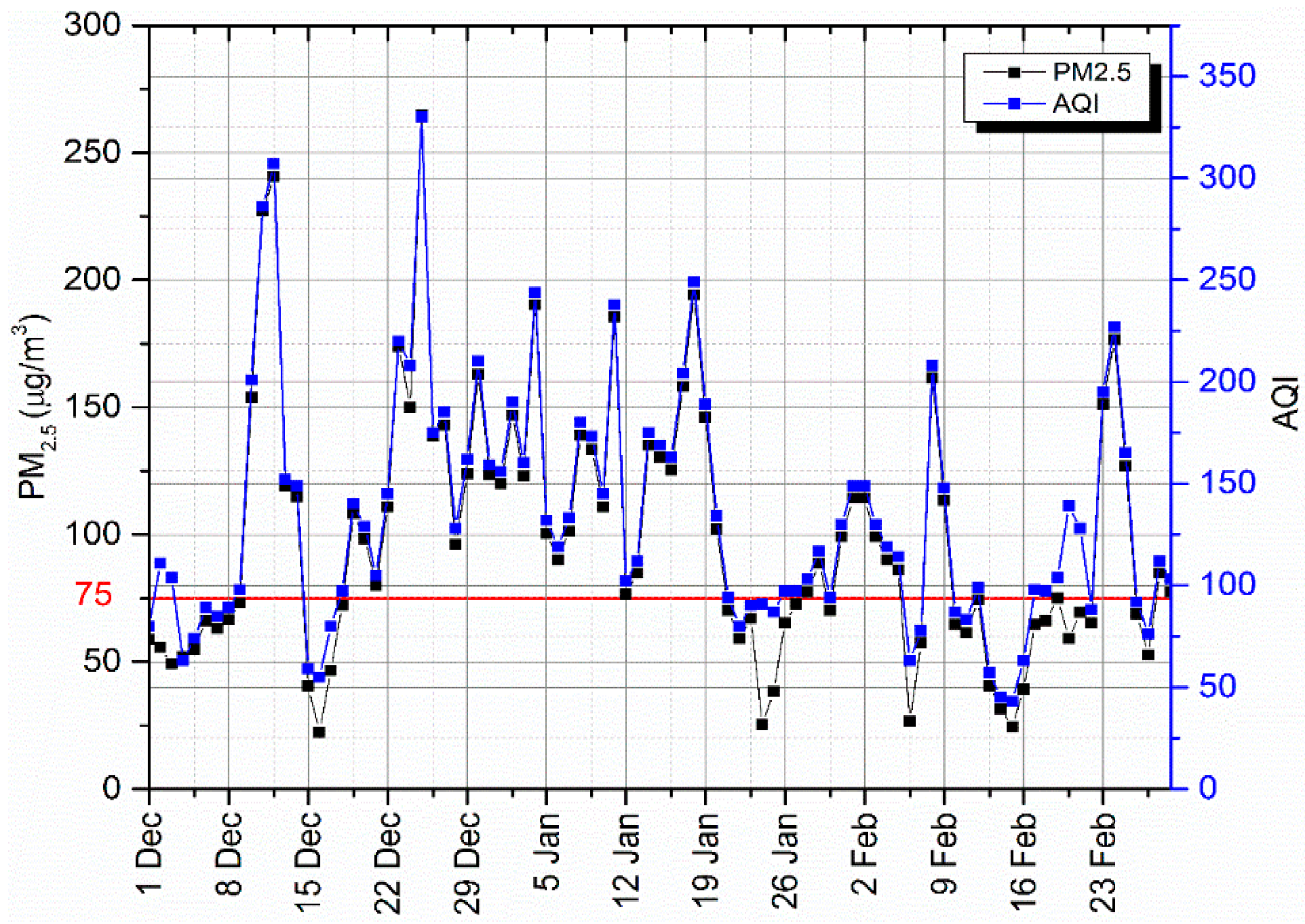
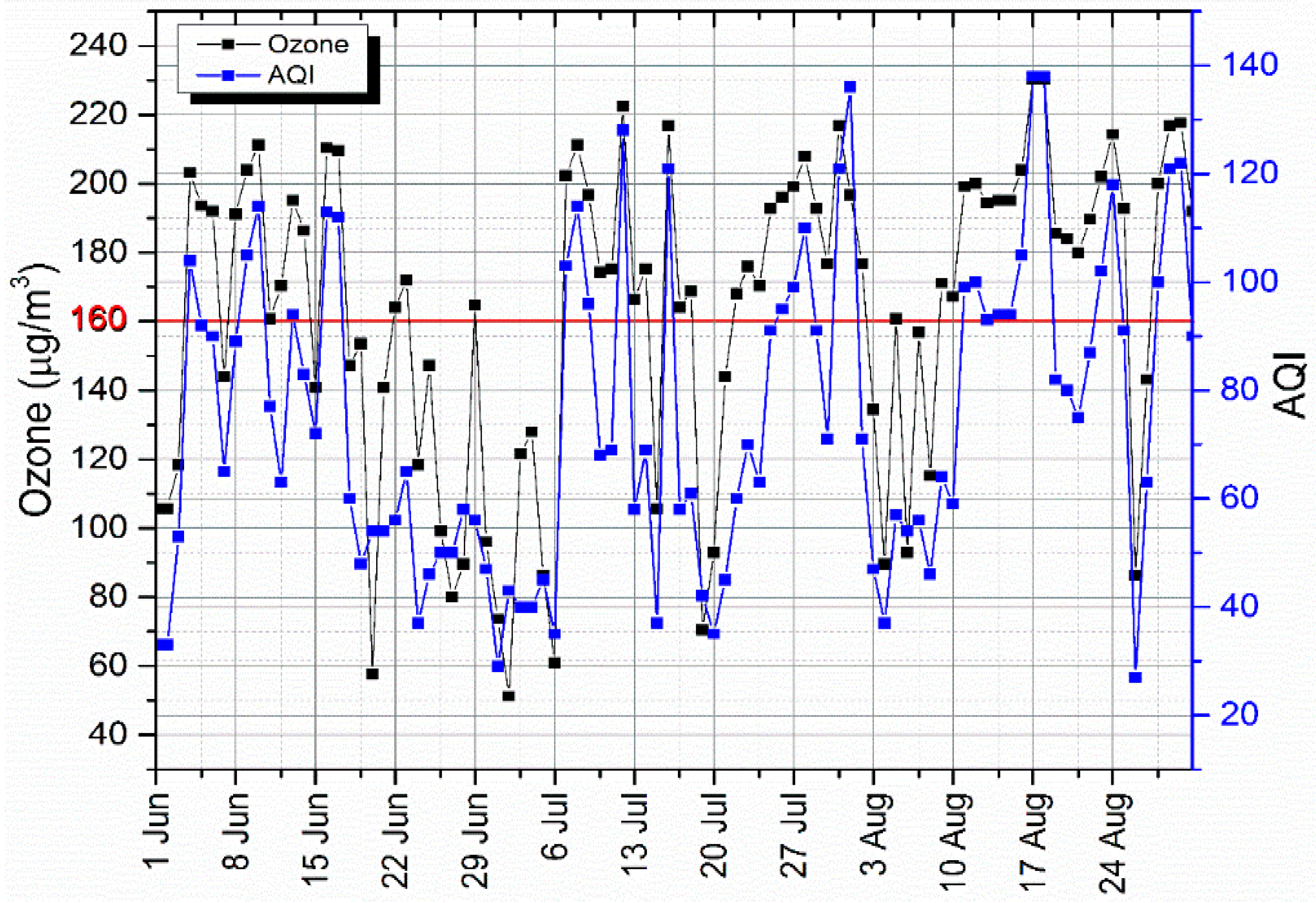
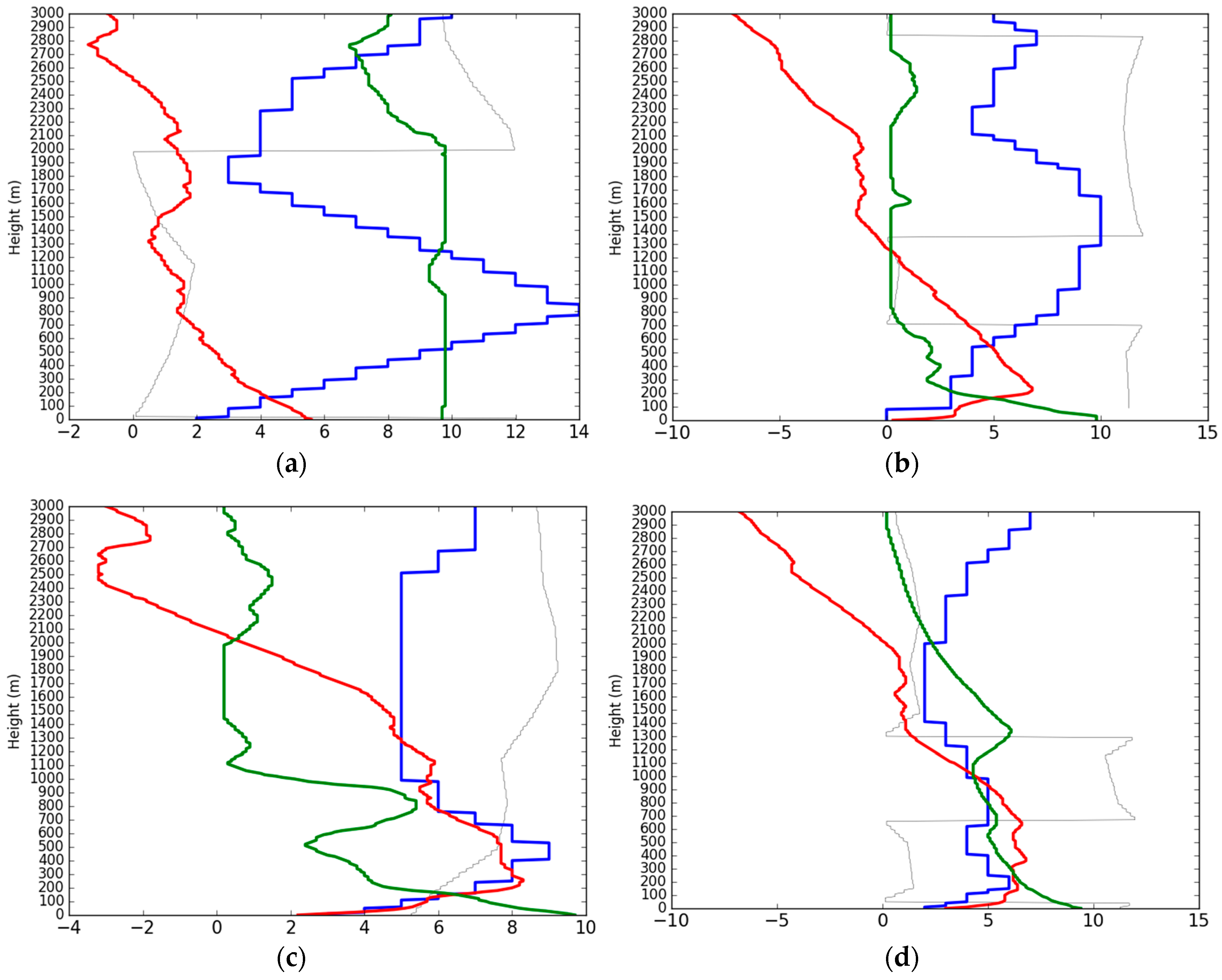

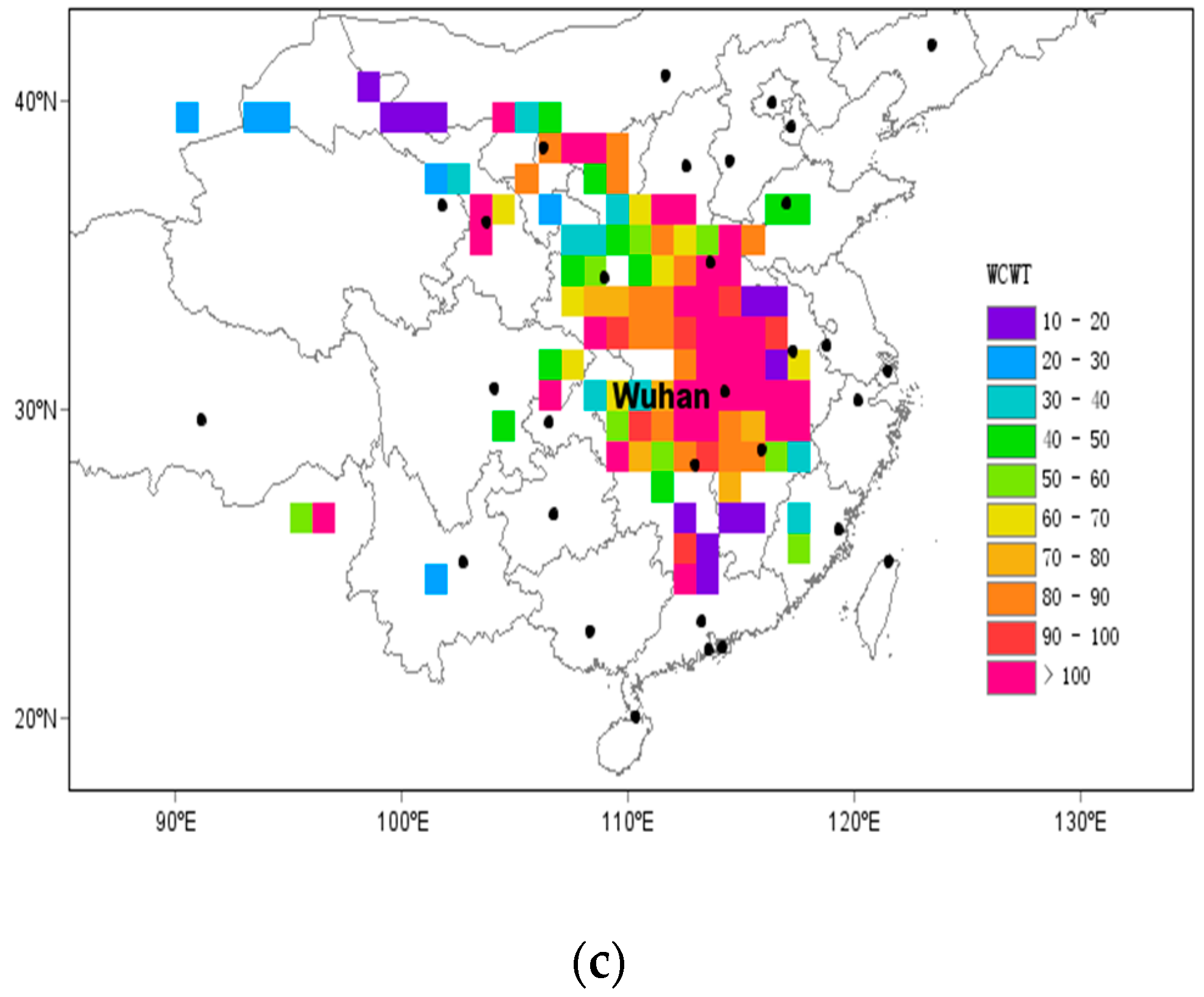
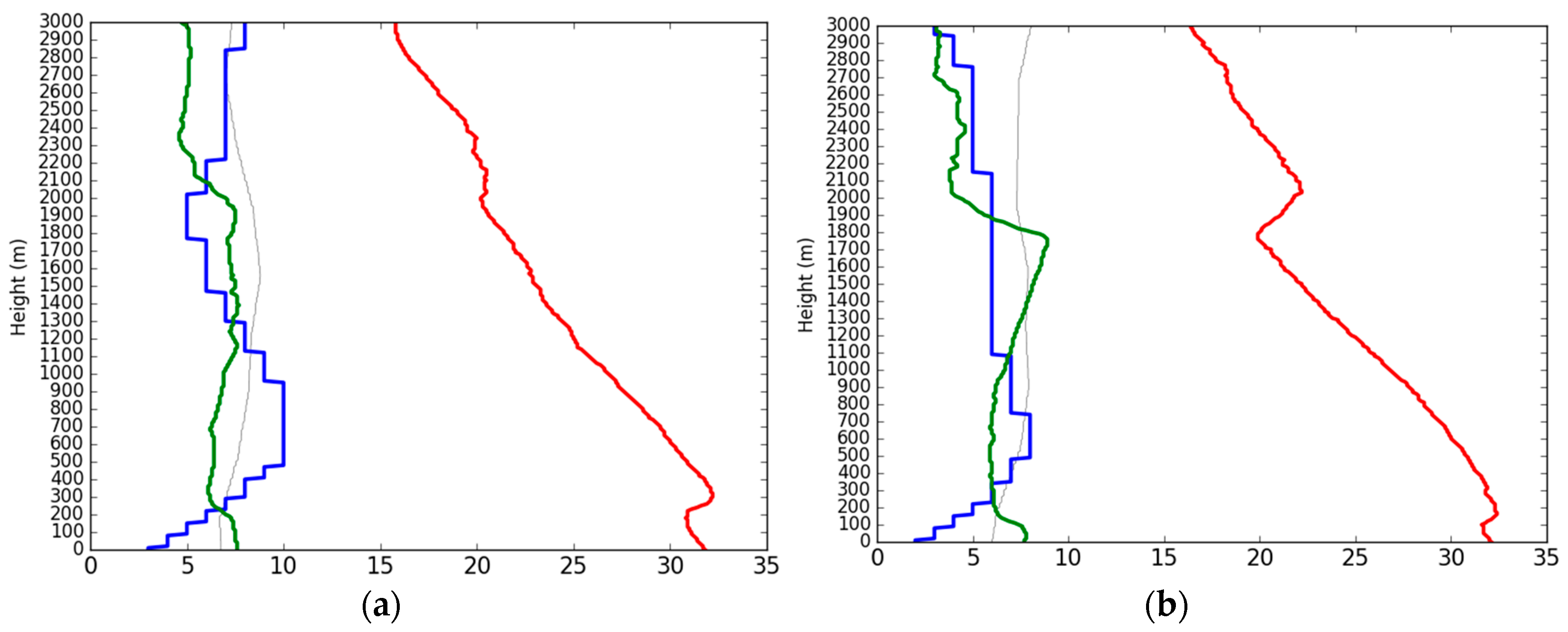


| Air Quality Index (AQI) | Air Quality Index Level | Air Quality Index Category |
|---|---|---|
| 0~50 | Level 1 | Excellent |
| 51~100 | Level 2 | Good |
| 101~150 | Level 3 | Slightly polluted |
| 151~200 | Level 4 | Moderate polluted |
| 201~300 | Level 5 | Heavy pollution |
| >300 | Level 6 | Severe pollution |
| Date | Air Temperature (°C) | Humidity (%) | Wind Speed (m/s) | Wind Direction | Pressure (hPa) | Characteristics of Inversion Layer | ||
|---|---|---|---|---|---|---|---|---|
| Strength (°C/100 m) | Altitude (m) | Thickness (m) | ||||||
| 16 December 2015 | 1.1 | 66 | 3 | 360 | 1032 | 2.5 | 0 | 90 |
| 17 December 2015 | −3.0 | 96 | 1 | 315 | 1032 | 1.9 | 0 | 220 |
| 18 December 2015 | −3.0 | 97 | 2 | 113 | 1030 | 4.2 | 0 | 130 |
| 19 December 2015 | 4.2 | 66 | 1 | 45 | 1028 | 0.2 | 0 | 140 |
| 20 December 2015 | 4.0 | 85 | 1 | 248 | 1027 | NIL | NIL | NIL |
| 21 December 2015 | 5.4 | 90 | 2 | 90 | 1023 | NIL | NIL | NIL |
| 22 December 2015 | 5.5 | 97 | 2 | 360 | 1023 | 0.5 | 360 | 110 |
| 23 December 2015 | 5.2 | 93 | 2 | 68 | 1021 | 0.2 | 320 | 100 |
| 24 December 2015 | 5.6 | 97 | 2 | 360 | 1022 | NIL | NIL | NIL |
| 25 December 2015 | 0.3 | 98 | 0 | C | 1027 | 2.3 | 0 | 270 |
| 26 December 2015 | 2.2 | 97 | 3 | 158 | 1021 | 2.3 | 0 | 260 |
| 27 December 2015 | 3.0 | 94 | 2 | 338 | 1024 | 1.9 | 0 | 180 |
| 28 December 2015 | 2.7 | 90 | 1 | 360 | 1034 | 0.5 | 350 | 250 |
| Average | 2.6 | 89.7 | 1.7 | 360 | 1026 | 1.7 | 343m | 175 |
© 2018 by the authors. Licensee MDPI, Basel, Switzerland. This article is an open access article distributed under the terms and conditions of the Creative Commons Attribution (CC BY) license (http://creativecommons.org/licenses/by/4.0/).
Share and Cite
Mbululo, Y.; Qin, J.; Hong, J.; Yuan, Z. Characteristics of Atmospheric Boundary Layer Structure during PM2.5 and Ozone Pollution Events in Wuhan, China. Atmosphere 2018, 9, 359. https://doi.org/10.3390/atmos9090359
Mbululo Y, Qin J, Hong J, Yuan Z. Characteristics of Atmospheric Boundary Layer Structure during PM2.5 and Ozone Pollution Events in Wuhan, China. Atmosphere. 2018; 9(9):359. https://doi.org/10.3390/atmos9090359
Chicago/Turabian StyleMbululo, Yassin, Jun Qin, Jun Hong, and Zhengxuan Yuan. 2018. "Characteristics of Atmospheric Boundary Layer Structure during PM2.5 and Ozone Pollution Events in Wuhan, China" Atmosphere 9, no. 9: 359. https://doi.org/10.3390/atmos9090359




